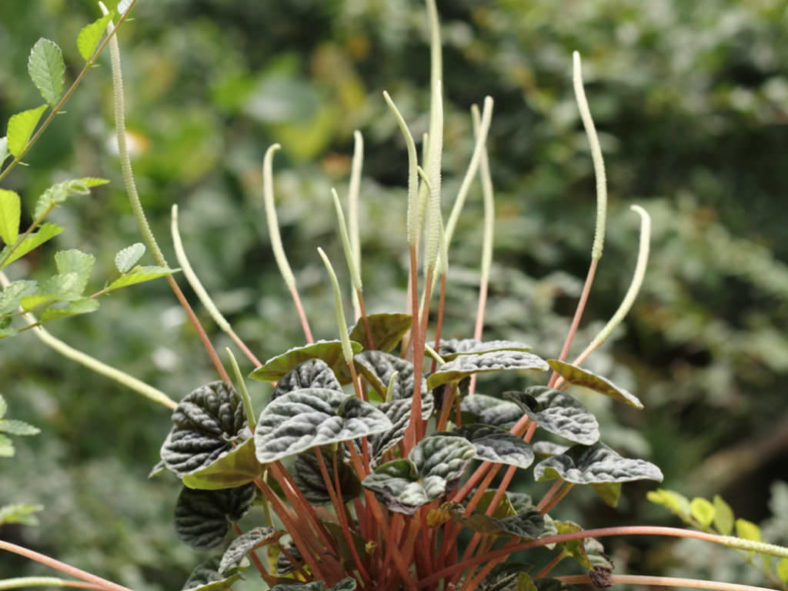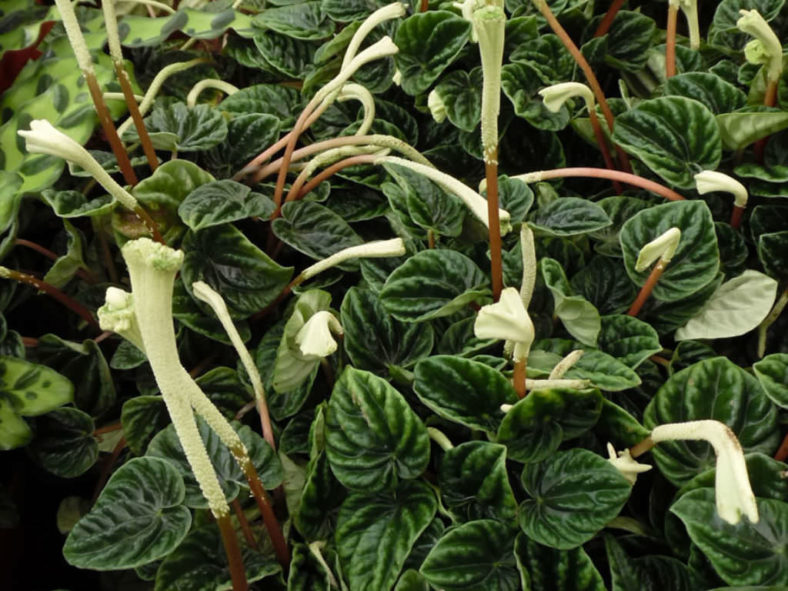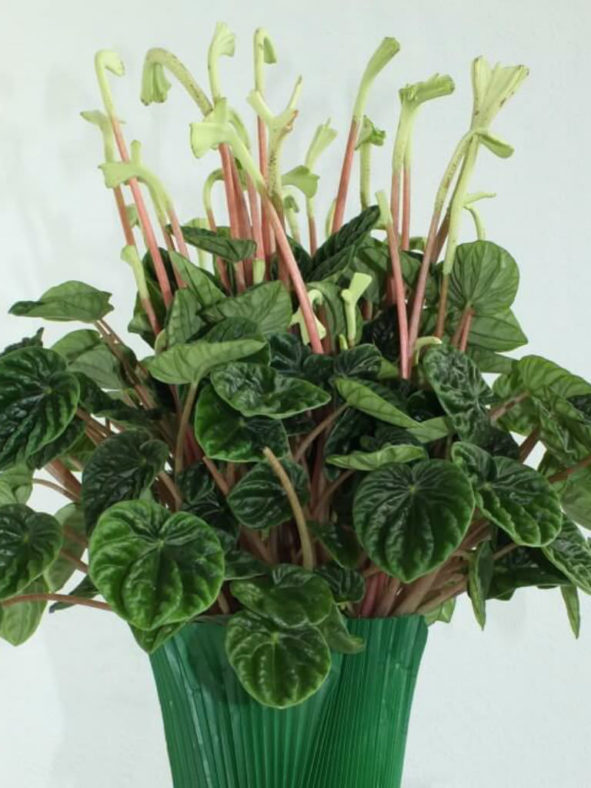Scientific Name
Peperomia caperata Yunck.
Common Name(s)
Emerald Ripple Peperomia, Emerald Ripple Pepper, Green Ripple Peperomia, Ivy-leaf Peperomia, Little Fantasy Peperpmia
Scientific Classification
Family: Piperaceae
Genus: Peperomia
Origin
Peperomia caperata is native to Brazil.
Description
Peperomia caperata is a semi-succulent plant that forms a mound of rosettes of long-stemmed, wrinkled, heart-shaped, dark green leaves on red-tinged stalks. This epiphytic plant can grow up to 8 inches (20 cm) tall and wide. The leaves are deeply veined with an attractive, corrugated surface, and can reach up to 1.5 inches (3.7 cm) in length. The leaf color is close to black along the grooves.
The plant produces tiny, whitish-green flowers that bloom in summer and early fall. The flowers appear on thin, reddish stalks that rise well above the foliage.

Hardiness
USDA hardiness zones 11a to 11b: from 40 °F (+4.4 °C) to 50 °F (+10 °C).
How to Grow and Care
Peperomias are not particularly hard plants to grow, and their small size and delicate leaves make them perfect for desktops and dish gardens. They will rarely overtake their neighbors or shade them out. In short, they are perfectly mannered and attractive little plants. The biggest problems are usually related to watering. They like steadily moist soil but can be very sensitive to overwatering. Overwatered Peperomias tend to wilt or have raised, scab-like protrusions on their leaves. Don't be alarmed if your plant loses a few bottom leaves, but leaf drop is usually due to a temperature change or fertilizer problem. Lastly, Peperomias are susceptible to mealy bugs watch out for cottony white masses on the stems or undersides of leaves. These plants thrive when slightly pot-bound, so don't over-pot them.
Repot plants in spring, especially to refresh the existing soil, but place either back into the same size container after root-pruning or go up only one pot size. The largest Peperomias remain relatively, and they will never grow into large specimen plants. Most species can be relatively easily propagated from leaf cuttings.
Learn more at How to Grow and Care for Peperomia.
Links
- Back to genus Peperomia
- Succupedia: Browse succulents by Scientific Name, Common Name, Genus, Family, USDA Hardiness Zone, Origin, or cacti by Genus
Photo Gallery
Click on a photo to see a larger version.

